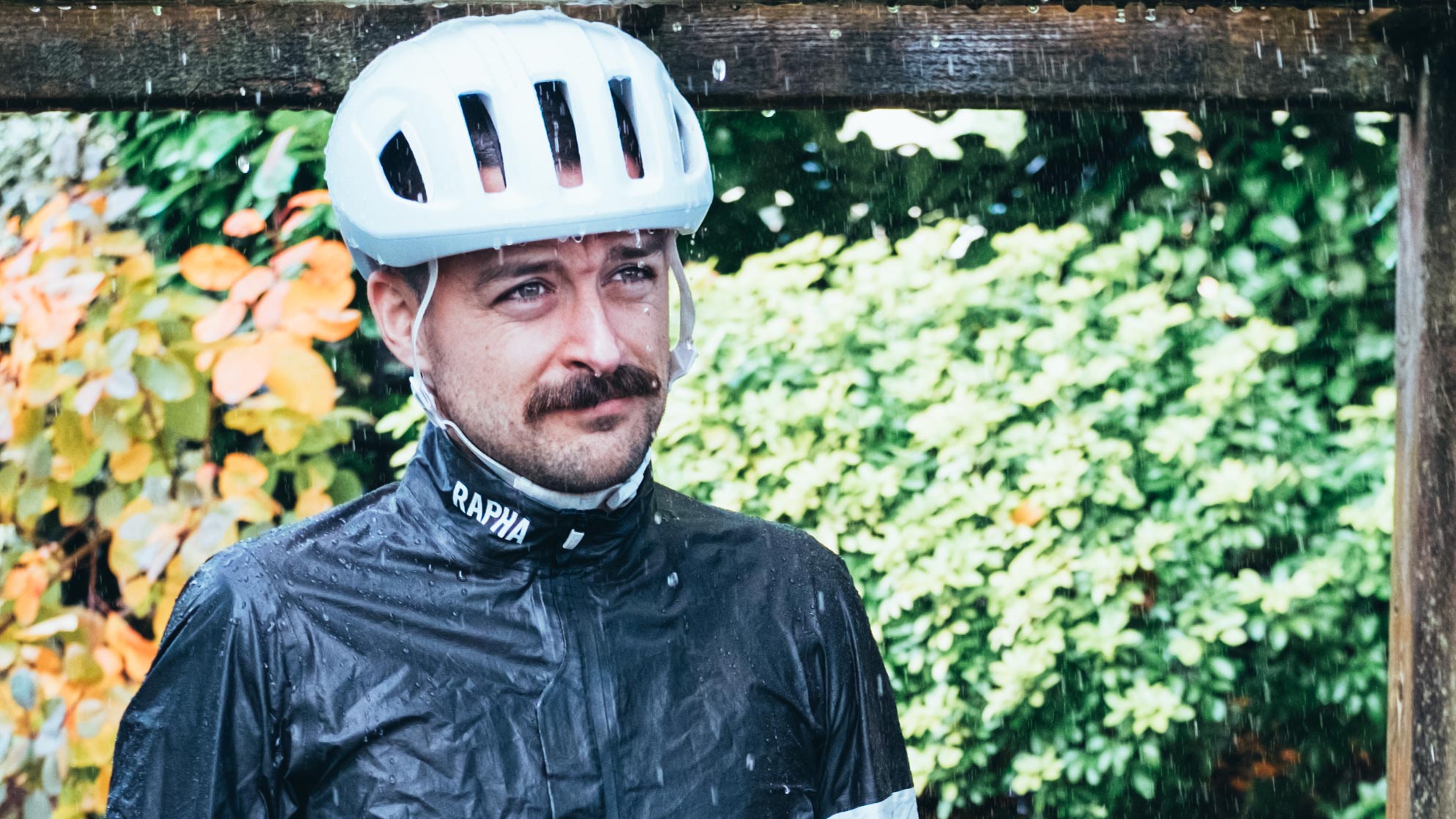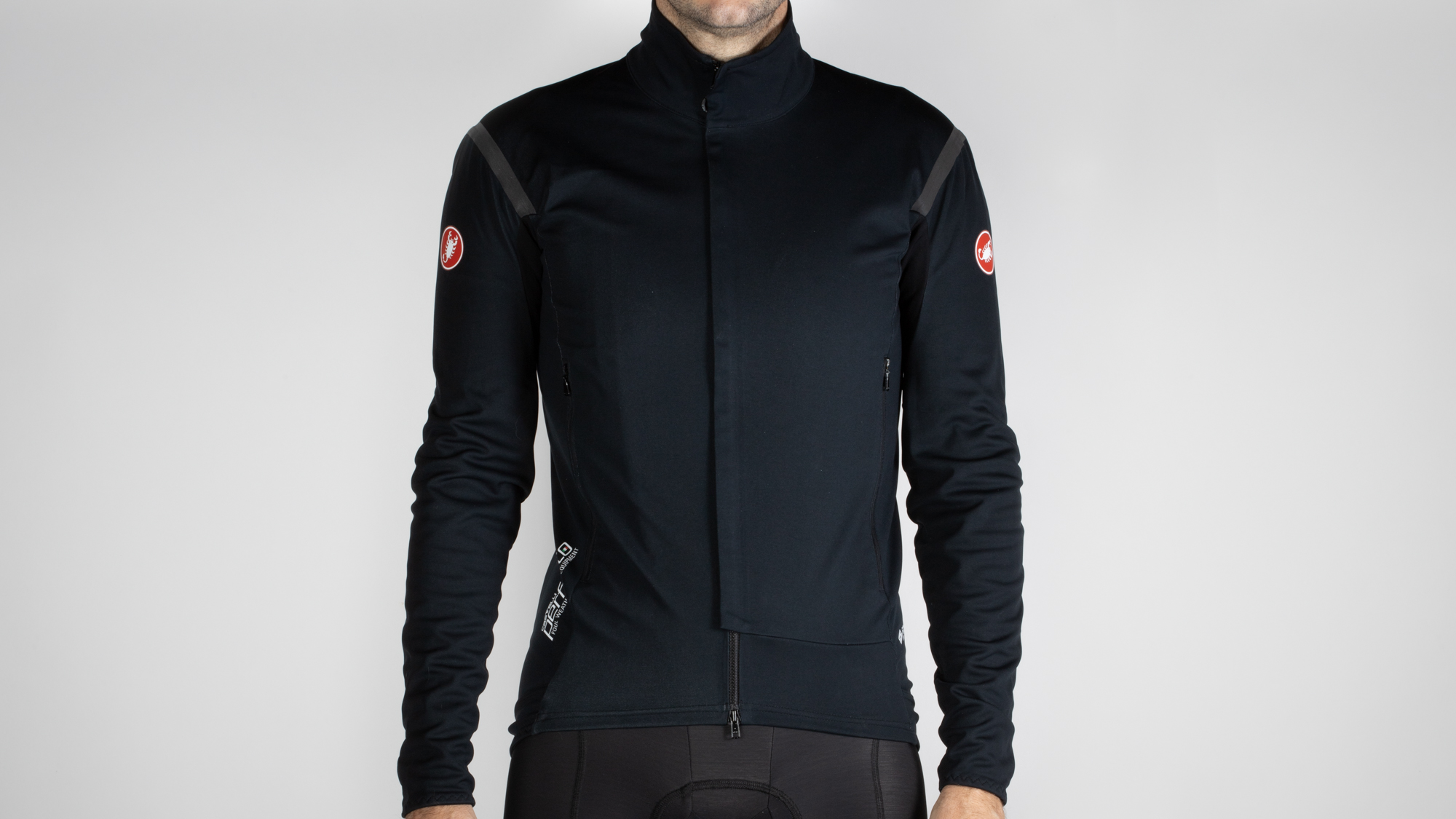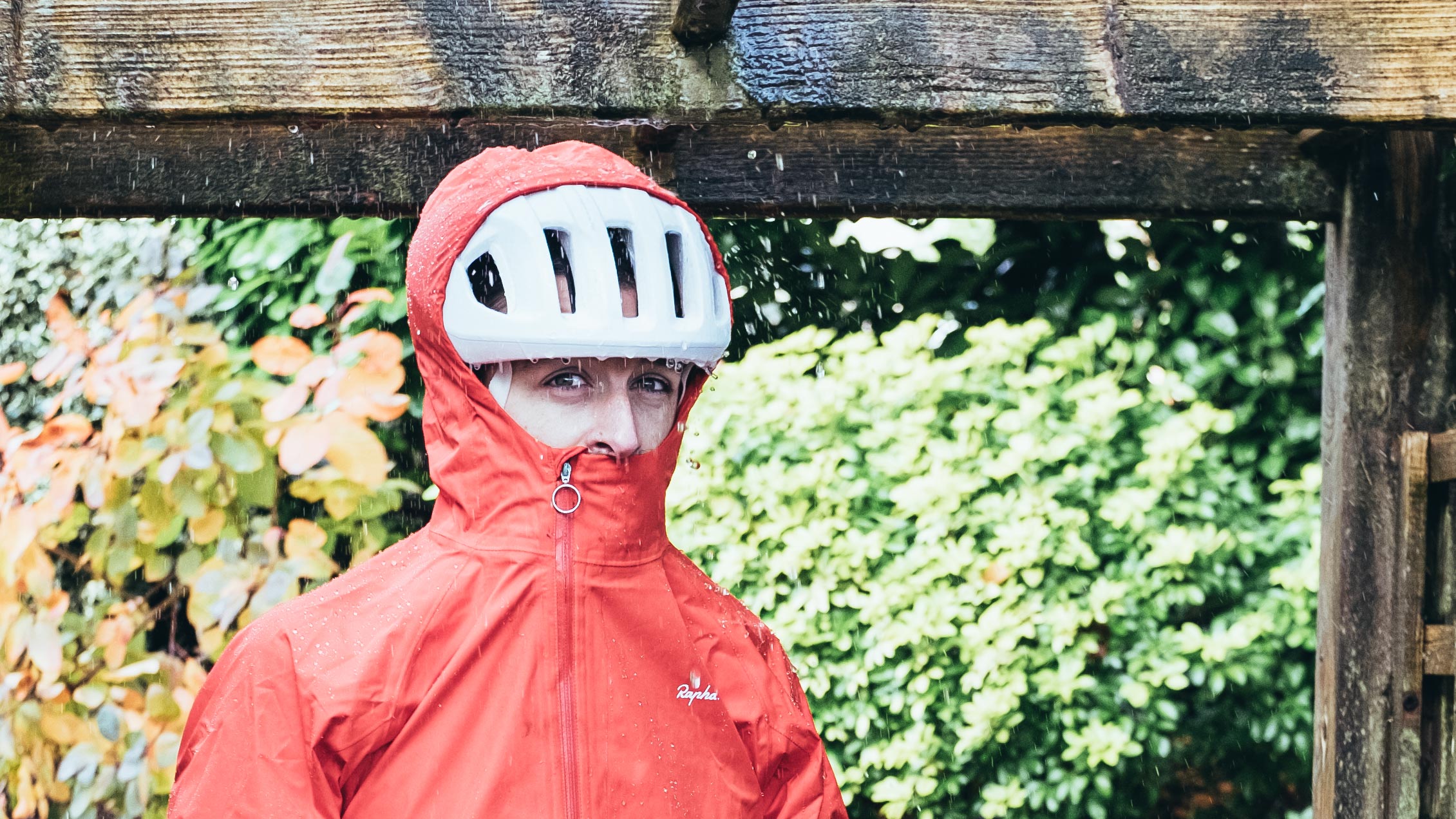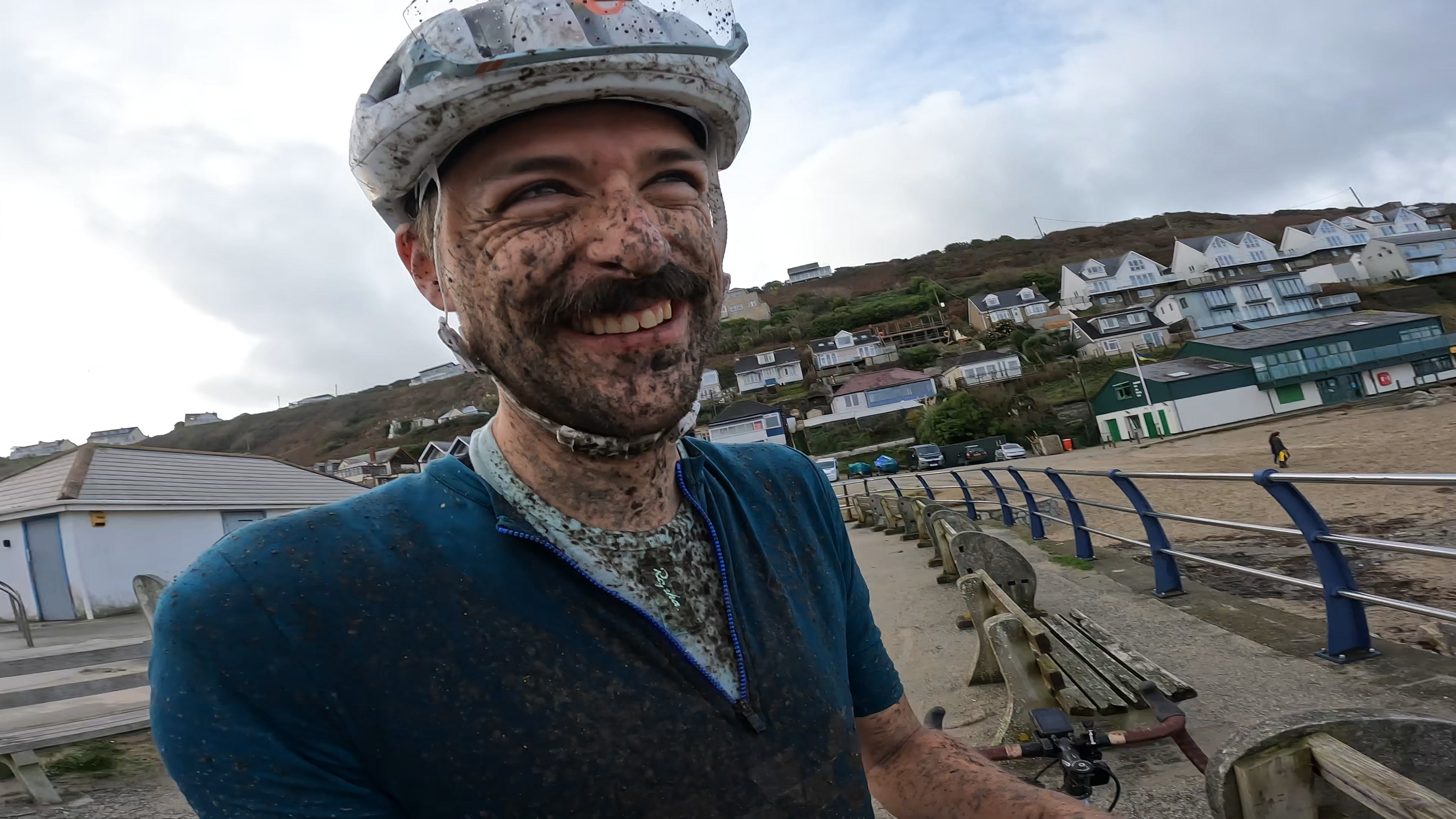Six things I learnt when testing waterproof cycling jackets
Some words of wisdom following months of cycling in downpour after downpour

I’ve spent a lot of time recently checking the weather forecast. You may well have been doing the same in order to avoid the worst weather, but I’ve been doing my best to time all of my riding with any rain that passes over wherever I happen to be at the time, in order to bring you a thoroughly comprehensive guide to the best waterproof cycling jackets.
My shoes, both my road and gravel ones, have genuinely remained permanently soggy, I have accidentally submerged my bottom bracket misjudging puddles, and on one memorable ride I managed to destroy a brand new front light in under an hour, such was the level of spray coming off my front wheel.
Through this testing, I’ve been able to bring you some recommendations for what I think of as the best option for specific use cases, but I’d like to share with you some more general learning points so that you can have a better time while riding in the rain, whichever jacket you opt for.
Without further ado then, here are six lessons that I’ve picked up while becoming borderline amphibious.

1. For an hour of hard riding, just use a softshell
If, like me, your winter riding flips from the long, beautiful epics of the summer into snatched hours in the twilight gloom, and you go for intensity over distance, then my advice would be to just use a softshell jacket. Our guide to the best winter cycling jackets has plenty of options but in terms of maintaining an ideal temperature something like the Rapha Pro Team Long Sleeve Gore-Tex Infinium Jersey - with its concise nomenclature - is going to stand you in far better stead than even the most breathable waterproof cycling jackets.
Cycling at high intensities generates an enormous amount of heat, more than any waterproof jacket can deal with without leaving you sweaty, and in turn more or less as wet as you’d be anyway, except far too hot. It's why you see pro riders throwing their rain capes off for the final 50km, unless it's bad enough weather to begin discussing calling the stage off early. Softshell options, by comparison, allow you to get wet, but let you offload substantially more body heat, making life more comfortable.
For long days at a lower intensity, though, a hardshell is going to be better if it’s actually raining.
Get The Leadout Newsletter
The latest race content, interviews, features, reviews and expert buying guides, direct to your inbox!
2. Fit is more important than you’d think
While a flappy jacket is not aerodynamic, riding a jacket cut for your riding position makes a huge difference beyond better cheating the wind. If you ride in an extremely race-cut jersey in an upright position you will likely leave the bottom of your stomach exposed. Sure, it may be covered by the best winter bib tights if they have a good high waist, but in allowing it to get wet it can chill. The stomach has a lot of blood flow but does not generate much heat, so keeping it covered by your shell goes a great way to keeping you comfortable.
Likewise, wearing a casually cut jacket in a racy position will potentially leave your rear end exposed, and, if you’re not running the best road bike mudguards, wet too.
Finally, on this point, a waterproof cycling jacket can be made from the most waterproof and breathable fabric on the planet, but if it doesn't fit well at the hem, cuffs, and neck, water will make its way through these large openings. Elasticated cuffs can get soggy around the wrist, but do a good job of sealing water out. If you’re going with adjustable cuffs make sure they can cinch tight enough to seal as much of the water out as possible.

3. Hoods should be stowable, but usually aren't
My biggest frustration when testing all the hooded jackets was that, with the exception of the Rapha Commuter Jacket, none had stowable hoods. While a hood is, if designed well like that of the Rapha Trail or Albion Zoa, definitely of benefit to your overall riding experience if you’re not going hell for leather, when not in use they act as an air dam if you’re riding in anything other than an upright position.
Even with the jacket fully zipped up, if you even look at the drops the hood scoops a giant clod of air and billows behind you, both slowing you down and in some cases tightening the neck. A simple fabric tab and a popper, or some Velcro, is all it takes. Even hiking jackets, where aerodynamics aren't a consideration, often have it as a feature, so for the majority of waterproof cycling jackets to omit them is genuinely baffling to me.
4. Don't neglect the rest of your body
Rain, particularly heavy and/or protracted rain, will soak through the best cycling overshoes, the best winter cycling shoes, the best winter cycling gloves, and the best leg warmers, regardless of any DWR treatment or waterproof membranes these items offer, it’s genuinely a matter of time rather than a lack of protection. Does that mean you should eschew them altogether? No.
Not only is being wet unpleasant in its own right, as the water evaporates it saps heat from your body leaving you more prone to chills. On some rides I did get sick of the feeling of sodden tights against my legs, or the laden feel of sloppy overshoes, and went without instead. “My skin is waterproof,” I’d say to myself before heading out the garage door, soon to be shivering.
At some point, even in milder climates, you get to a point where cycling harder won’t warm you up, so it’s best to avoid getting to that point altogether if you can by protecting your whole body as best you can for the conditions that face you.

5. If you trash your gear, don’t buy top-end
When I raced cyclocross over several winters in Yorkshire I faced some of the worst conditions I’ve ever ridden in. Laps in ankle-deep mud, falling off, sleet and driving rain making me question every decision that had led up to this point. For my warm-up laps though, despite the conditions being truly atrocious, I opted to use a ten quid softshell jacket that I bought from the middle aisle of my local supermarket because every week it got caked in mud, dropped on the floor, and nearly lost in the chaos of the starting grid.
Yes, better, more expensive jackets will offer you better protection, but if you’re particularly hard on your gear you may well do better going for something that is technically worse, allowing you to more easily replace it when you eventually destroy it. It’s the same reason I raced on Shimano 105 rather than anything fancier, because ripping a derailleur off wasn’t uncommon: Don't race (or ride) what you can't replace. This is primarily aimed at those of you venturing off-road I should add, unless you make a habit of crashing every fortnight on the road, in which case maybe you should consider the best smart trainers instead or a set of the best winter road bike tyres instead.
6. Wash your gear properly or you will destroy it
Waterproof membranes are generally fragile, which is why they’re usually sandwiched between an inner and outer fabric. While they are physically fragile they are also chemically so, and for reasons my A-Level chemistry lessons didn’t impart on me, soap - in particular, Bio laundry detergent and fabric softener - will destroy the membrane, as well as the elastane and lycra. I’ll be really clear here:
Do not wash your waterproof cycling jacket with normal laundry detergent!
At some point you will need to wash your jacket, both to restore the durable water-repellent coating and flush out any micro-debris that clogs it, both of which affect the breathability. When the time comes, use sport-specific waterproof garment washes such as those from Assos or NikWax, and follow the recommendations on your particular jacket.
Now that you know all that I know, head over to the guide to the best waterproof cycling jackets to see which options made the cut.

Will joined the Cyclingnews team as a reviews writer in 2022, having previously written for Cyclist, BikeRadar and Advntr. He’s tried his hand at most cycling disciplines, from the standard mix of road, gravel, and mountain bike, to the more unusual like bike polo and tracklocross. He’s made his own bike frames, covered tech news from the biggest races on the planet, and published countless premium galleries thanks to his excellent photographic eye. Also, given he doesn’t ever ride indoors he’s become a real expert on foul-weather riding gear. His collection of bikes is a real smorgasbord, with everything from vintage-style steel tourers through to superlight flat bar hill climb machines.